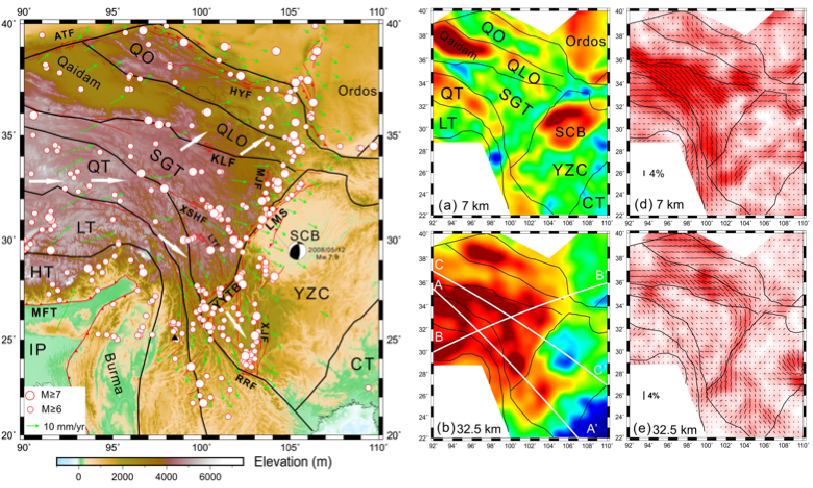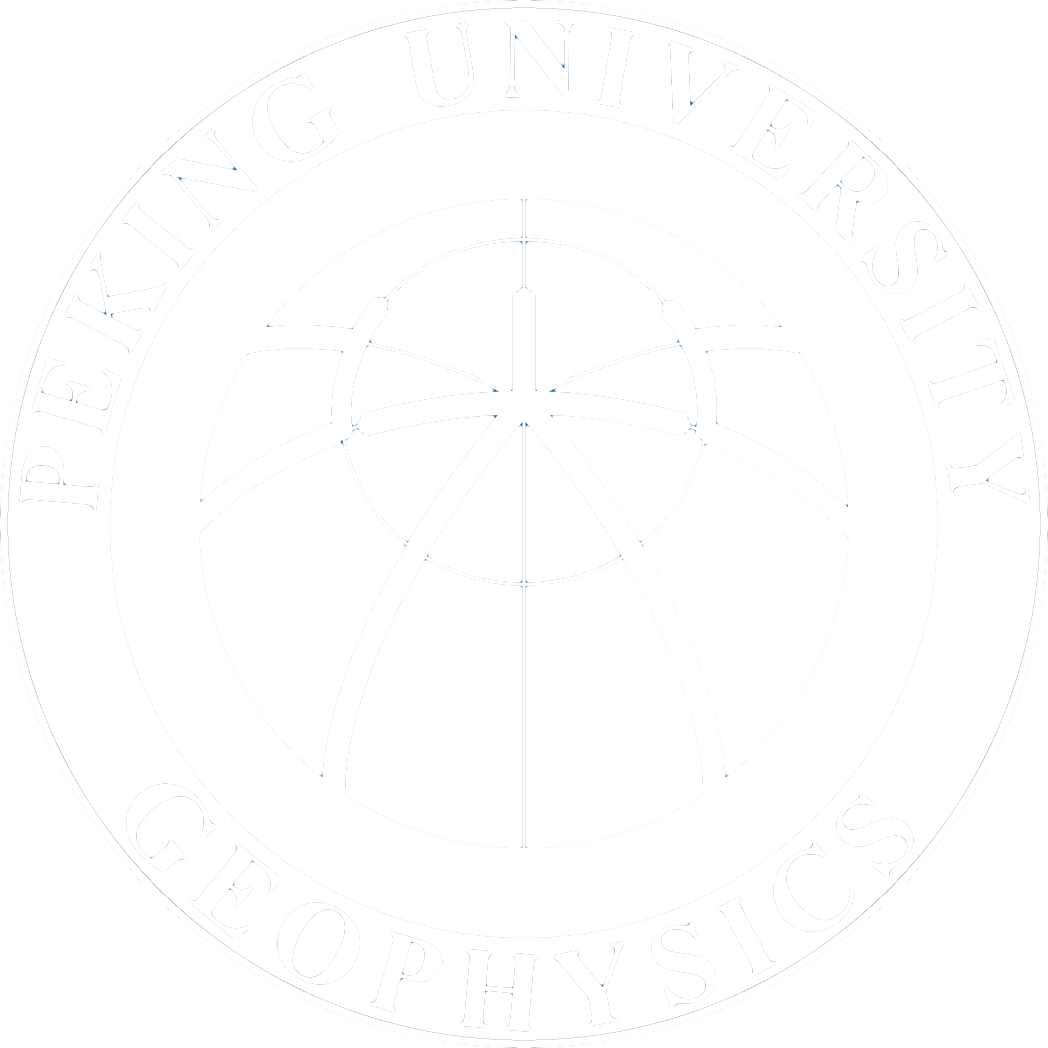An episodic growth model for the Tibetan Plateau from ambient-noise anisotropic tomography
2020-07-13
How the Tibetan Plateau uplifted and deformed remains vigorously debated and several competing models have been proposed. Recently, Prof. Xuewei Bao from Zhejiang University and Prof. Xiaodong Song from Peking University and collaborators constructed a new azimuthally anisotropic shear-velocity model for the lithosphere beneath Eastern Tibet using ambient-noise tomography from more than 600 seismic stations. In this model, the Tibetan upper crust exhibits strong azimuthal anisotropy with fast directions sub-parallel to surface geologic features and mantle anisotropy, indicative of vertically cohere deformation of the lithosphere. However, a totally different picture emerges in the mid-lower crust of the plateau proper, where the disordered azimuthal anisotropy is much weaker than the plateau margins, in contrast to the prediction of the popular large-scale eastward crustal flow model. Combining the new seismic observation with other studies,they propose an episodic growth model for the plateau, in which heterogeneous crustal thickening was a primary driver at the early stage and the weakened mid-lower crust flowed locally at a later stage without consistent directions. In addition,the southeastern plateau margin was raised likely by upwelling asthenosphere.

Figure 1. Simplified geologic map (left) and azimuthally anisotropic Vsv model(right) of eastern Tibet. In the Tibetan upper crust, strong azimuthal anisotropy well correlates with surface geology. However, anisotropy in the mid-lower crust beneath the plateau proper is much weaker.
This work was published in Geophysical Research Letters with Prof. Xuewei Bao as the first author and Prof. Xiaodong Song as corresponding author. The seismic data were provided by Data Management Centre of China National Seismic Network at Institute of Geophysics, China Earthquake and Data Management Center at the Incorporated Research Institution of Seismology.This research was supported by the Natural Science Foundation of China (41774045, 41830212). For more details please refer to the following paper.
Bao, X., Song, X.*, Eaton, D. W., Xu, Y., & Chen, H. (2020). Episodic lithospheric deformation in eastern Tibet inferred from seismic anisotropy. Geophysical Research Letters, 47, e2019GL085721. https://doi.org/ 10.1029/2019GL085721.
